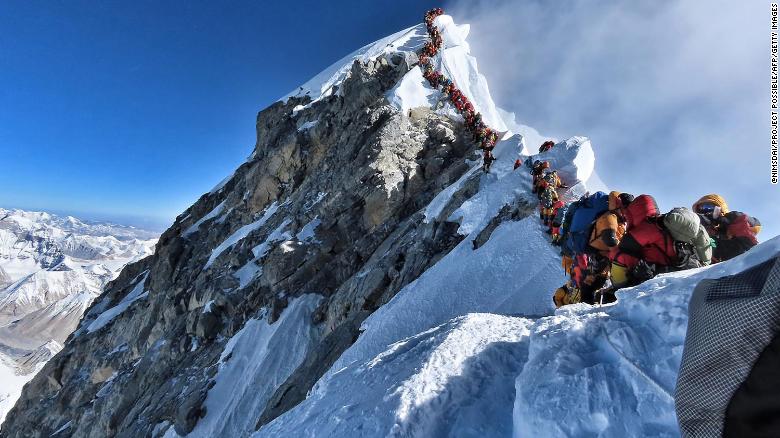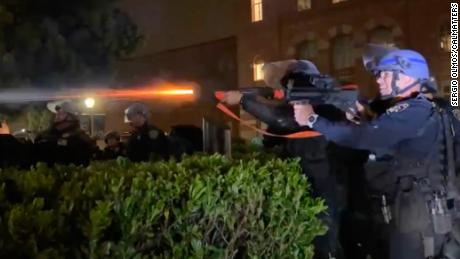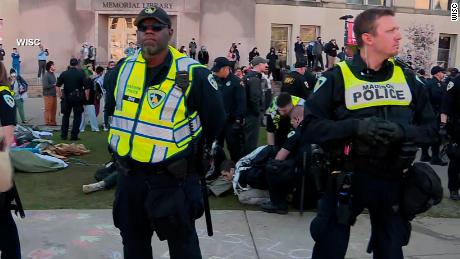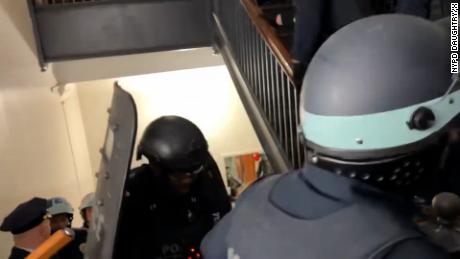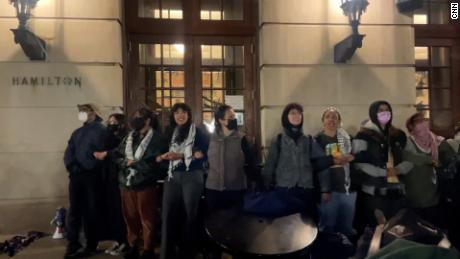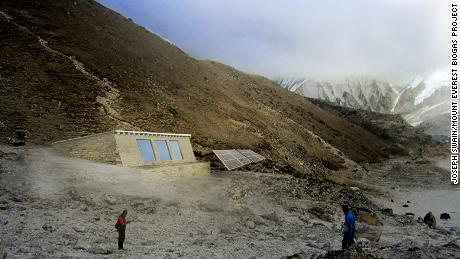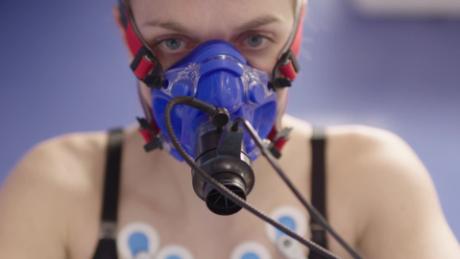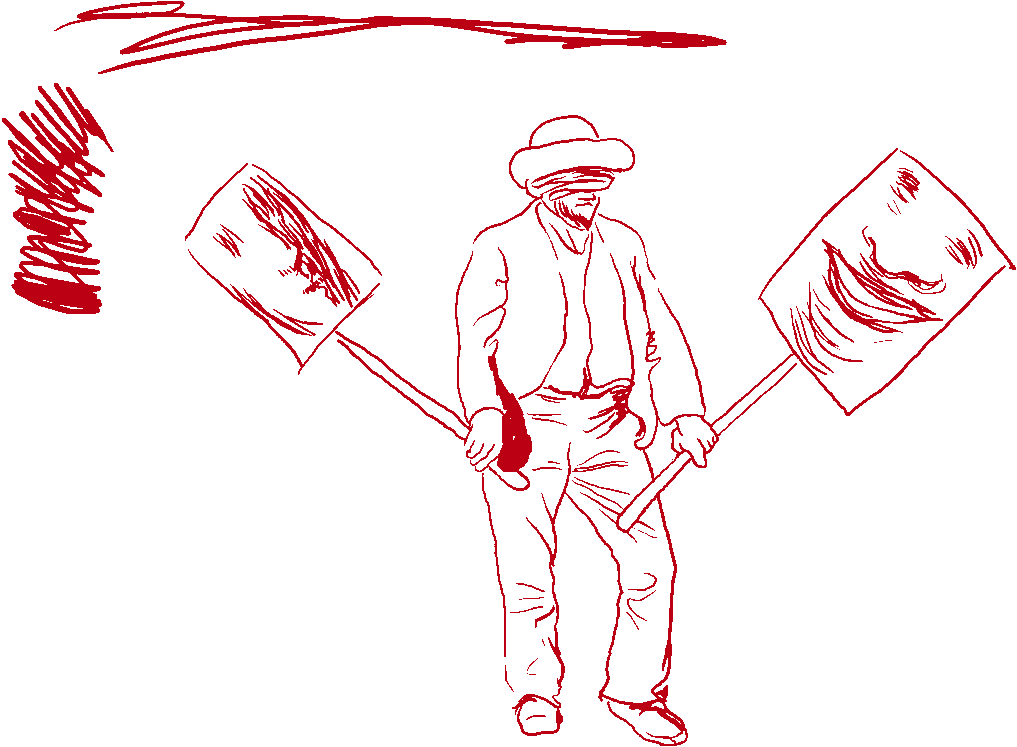(CNN)Another mountaineer has died after summiting Mount Everest, bringing the death toll for the 2019 climbing season to 11 people.
American attorney Christopher John Kulish, 62, died on Monday after reaching the top of Everest on the Nepalese side of the mountain in the morning, Meera Acharya, the Director of Nepal's Tourism Department told CNN.
While descending, he was strong and safely reached the South Col (situated at an altitude of around 7,900 meters, or 25,918 feet) late Monday evening before he suddenly passed away, she said.
In a statement, the family of the Colorado man said they were "heartbroken" at the news. "Chris, who turned 62 in April, went up with a very small group in nearly ideal weather after the crowds of last week had cleared Everest."
"He saw his last sunrise from the highest peak on Earth. At that instant, he became a member of the '7 Summit Club' having scaled the highest peak on each continent," the statement continued. His family said he died doing what he loved and that he is survived by his mother and younger siblings.
Also on Monday, an Austrian family confirmed the death of one of their relatives. Sixty-four-year-old Ernst Landgraf died on Thursday, hours after fulfilling his dream of scaling Everest, according to his obituary and funeral announcement placed by his family.
Landgraf lived for his family and climbing, and died fulfilling his dream, the obituary read in part. He is survived by his wife and children. His memorial service will be Wednesday in Ubelbach, Austria.
Mountaineers have suggested difficult weather conditions, a lack of experience and the growing commercialization of expeditions as contributing factors to the backlog.
British climber Robin Haynes Fisher was one of those who had warned of the dangers of overcrowding.
"With a single route to the summit, delays caused by overcrowding could prove fatal so I am hopeful my decision to go for the 25th will mean fewer people. Unless of course everyone else plays the same waiting game," he wrote in a captioned Instagram post on May 19.
He died after suffering from what appeared to be altitude sickness at 8,600 meters (28,215 feet), while returning from the summit on Saturday.
During the week beginning May 20, crowds of climbers became stuck in a queue to the summit, above the mountain's highest camp at 8,000 meters (26,247 feet). The summit of Mount Everest is 8,848 meters (29,029 feet) high.
Most people can only spend a matter of minutes at the summit without extra oxygen supplies, and the area where mountaineers have been delayed is known to many as the "death zone."
Mountain guide Adrian Ballinger told CNN many see Everest as the "ultimate challenge" but the problem he has seen is the "lower level of experience of the climbers trying to come here and also of the companies that are trying to offer services on the mountain."
He continued, "That lack of experience, both with the commercial operators and the climbers themselves, is causing these images we see where people make bad decisions, get themselves in trouble up high and end up having unnecessary fatalities."
Ballinger explained that seasoned climbers call any part of the mountain above 26,000 feet "the death zone," adding that "humans just really aren't meant to exist there."
"Even when using bottled oxygen, supplemental oxygen, there's only a very few number of hours that we can actually survive up there before our bodies start to shut down. So that means if you get caught in a traffic jam above 26,000 feet ... the consequences can be really severe," he added.
Veteran climber David Morton spoke to CNN from base camp on the Tibetan side of Mt. Everest. He had just descended after getting around 100 meters from the summit for a research project.
"The major problem is inexperience, not only of the climbers that are on the mountain but also the operators supporting those climbers," he explained. "Everest is primarily a very complicated logistical puzzle and I think when you have a lot of inexperienced operators as well inexperienced climbers along with, particularly, the Nepal government not putting some limitations on the numbers of people, you have a prime recipe for these sorts of situations happening."
Morton said he had gone up the mountain from the Tibetan side, where the government has put limitations on numbers.
"We were up just 100 meters below the summit on the 24th on a beautiful day and there were maybe 30 or 40 people going to the summit from the Tibet side, the north side. It was a completely different dynamic," he continued.
For Morton, he thinks it's reached a point where the operators need to be certified to organize trips up the mountain.
"I think then those outfitters can be the ones that are responsible for vetting the clients that they're bringing on the mountain," he added.
Nepali climbing guide Dhruba Bista fell ill on the mountain and was transported by helicopter to the base camp, where he died Friday.
And Irish climber Kevin Hynes, 56, died Friday morning on the Tibetan side of Everest in his tent at 7,000 meters (22,966 feet).
Two died Wednesday after descending from the summit: Indian climber Anjali Kulkarni, 55, and American climber Donald Lynn Cash, 55.
Kalpana Das, 49, and Nihal Bagwan, 27, both from India, also died on Everest this week. Both died Thursday on their return from the summit.
Ravi, a 28-year-old Indian climber who goes by one name, died the previous week on May 17.
Last week, a search for Irish climber Seamus Lawless, 39, was called off, after the Trinity College Dublin professor fell while descending from the peak, according to the Press Assocation.
Lawless is missing, presumed dead.
More than 200 mountaineers have died on the peak since 1922, when the first climbers' deaths on Everest were recorded. The majority of bodies are believed to have remained buried under glaciers or snow.
Correction: This story has been updated with Kulish's correct age.
